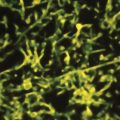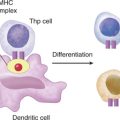CASE 49
LG is an 18-year-old girl in your practice with a history of seasonal allergies and, she says, multiple “bad responses” to many medications with rashes, wheezing, and general malaise. She has a known allergy to animal dander, including cats and dogs as well as rabbits (she had had one as a pet as a young child but was forced to give it up).
QUESTIONS FOR GROUP DISCUSSION
RECOMMENDED APPROACH
CONDITIONING OF VARIOUS IMMUNE PHENOMENA
CONDITIONED IMMUNE PHENOMENA: HUMAN STUDIES
CONDITIONING OF IMMUNE RESPONSES: POSSIBLE MECHANISMS
Alterations in the Hypothalamus-Pituitary-Adrenal Axis in Conditioning
In another study, recombinant IL-1β, which is capable of stimulating the HPA axis to secrete corticosterone (an immunosuppressant), was paired with environmental cues in either a taste aversion or odor conditioning procedure. Animals receiving paired delivery of cues and IL-1 showed corticosterone production on re-exposure to cues, although no evidence was seen for altered CNS concentrations of IL-1 in conditioned animals, which might have reflected a peripheral effect (of IL-1 increases), subsequently eliciting a conditioned CNS response.






